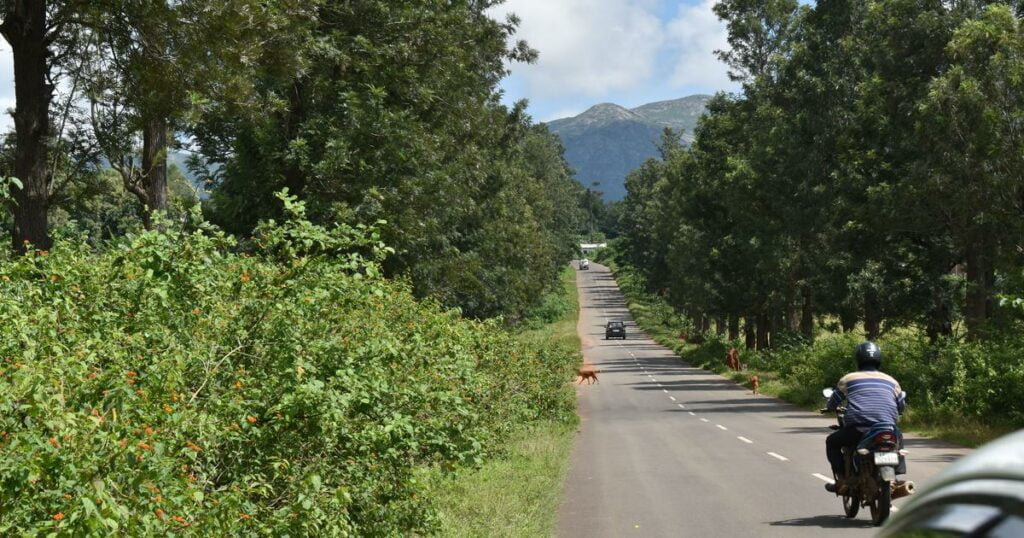On August 2nd the Parliament passed the contentious Forest (Conservation) Amendment Bill 2023, first introduced in the Lok Sabha in March of this year. Though not mandatory, it is considered good practice to refer Bills to the standing committee in question (in this case, the Standing Committee on Science and Technology, Environment, Forests and Climate Change headed by Congress MP Jairam Ramesh).
The Forest Conservation Bill was however referred to a Joint Parliamentary Committee (JPC) composed of 32 members from across party lines, appointed to assess the implications of this Bill becoming law.
This Bill comes on the heels of the updated Forest Conservation Rules that the government passed in 2022. These rules dealt with the procedure to be followed for the diversion of forested land into non-forested land that can be used for agricultural, industrial or other purposes. The Forest Conservation Law on the other hand deals with clarifying what would come under the ambit of ‘forested land,’ and what would be the scope of the non-forested activities that would be permitted in these lands.
What changes will the amendment bring?
The Forest Conservation Act 1980 stipulates that all natural forests officially categorised as forests by government records will be protected. However, the Supreme Court’s ruling in the Godavarman case (1996) widened the scope of the term ‘forest,’ to include not just those areas that have been categorised as such in government records, but also those that are “deemed forests.”
In other words, any land that satisfies the dictionary definition of the term (any large area with significant tree cover and undergrowth) would now be protected under the act. The latest Amendment backtracks from the 1996 ruling as it opens up all land that has not been officially recorded as ‘forests,’ to commercial activity. It also removes the checks and balances that the Act previously held such as forest clearance permissions and the informed consent of the local community.

This will affect 197,159 sq km or 27.62 per cent of India’s forest cover. The most affected states are predicted to be Odisha with 19,540 sq km, Karnataka with 16,182 sq km and Maharashtra with 14,758 sq km. This amendment will also sharply affect the Northeastern states that count for almost a quarter of India’s forest cover.
The latest Amendment backtracks from the 1996 ruling as it opens up all land that has not been officially recorded as ‘forests,’ to commercial activity. It also removes the checks and balances that the Act previously held such as forest clearance permissions and the informed consent of the local community.
This amendment was protested by several ecologists in a joint letter sent to the Environment Minister Bhupender Yadav. In the letter, the state of India’s forests was described to be ‘fragile,’ with only 21 per cent of India’s land area being covered by forests, of which only 12 per cent is intact natural forests.
India’s forest cover has risen 0.21 per cent or 1540 sq km between 2019 and 2021, and by around 2 per cent between 2021 and 2023. However, through the letter, the ecologists reveal the pattern of deforestation hiding behind the seemingly positive figures:
“Field surveys show that much of even this marginal increase in forest cover can be ascribed to commercial plantations, forest fragments and urban parks, that in no way can replace the ecological functions performed by intact natural forest.”

The amendment also exempts land located 100 km from India’s border from the protection afforded to forests under the Forest (Conservation) Act if the land is to be used for linear infrastructure projects such as roads and highways or security-related projects.
However, several ecologists have expressed concern over the vagueness of the phrase “strategic linear projects of national importance,” which leaves the act open to potential exploitation by pushing infrastructural projects that are devastating to the local ecology.
The bill will also exempt the land from ecotourism projects. In their letter to the government, the ecologists voiced their disapprobation of this aspect:
“As should be obvious, a zoo or safari park and a forest cannot be equated. One is a thriving ecosystem, interconnected in thousands of ways, many of which we are still only learning about. The other, a zoo, can be a place for ex-situ conservation or education but can never be a replacement for the former. The aim should be to construct world-leading conservation centres in addition to giving our natural ecosystems the protection they need.”
The ecologists’ letter also expresses concern about some of India’s biodiversity hotspots that will, from here on forth, lie outside the purview of the Forest Conservation Act. This includes areas such as the Aravalli forests which are “a vital green lung for northern India,” not to mention, home to hundreds of species of birds, reptiles, mammals and amphibians.
Opposition from the Northeastern States
Though the amendments were introduced in the Lok Sabha only in March 2023, a draft has been available in the public domain since June 2022. Since then, the draft has received opposition from several quarters including Northeastern states who opposed the amendments because vast tracts of forest land would be unilaterally taken away.
In the Northeast, more than 52 per cent of the RFA (Recorded Forest Area) remains unclassed and consequently stands excluded from the protection afforded by the Act. Even more alarming for the Northeastern states is that the 100 km exclusion zone specified in the amendment includes almost the whole of the Northeast.

90 per cent of Nagaland, and the whole of Meghalaya, Tripura and Mizoram fall under this range. These exemptions are also cause for concern regarding the rights of local communities, especially because a significant portion of the forest lands there are unclassed, while some are privately owned and managed by traditional institutions.
According to a report by the National Institute of Rural Development and Panchayati Raj, over 50 per cent of India’s tribal population lives in forests.
The Act fails to mention the Forest Rights Act, 2006 which recognises the rights of Scheduled Tribes and other traditional forest dwellers residing in forested land. The FRA applies to all Northeastern states, save for Nagaland and Mizoram.

According to the FRA, local communities have a say in whether to grant permission or not for the diversion of forest land through the means of gram sabhas. If the land falls outside the purview of the Forest Conservation Act, there is no longer any requirement to obtain the consent of the Gram Sabha for the diversion of the forest land. Alok Shukla of the Chhattisgarh Bachao Andolan, an alliance of over 20 organisations aimed at protecting Adivasi and farmers’ rights, comments:
“This bill is a way to exclude the community from the process, it will severely affect their livelihood and will negatively impact the symbiotic relationship the tribes have with the forests.”
About the author(s)
Keerthana (she/her) is a third-year English Literature student at St. Stephen’s College, Delhi University. She is interested in analysing art and pop culture through feminist and other sociocultural theories. She enjoys literature, music, films and the occasional cricket match.






